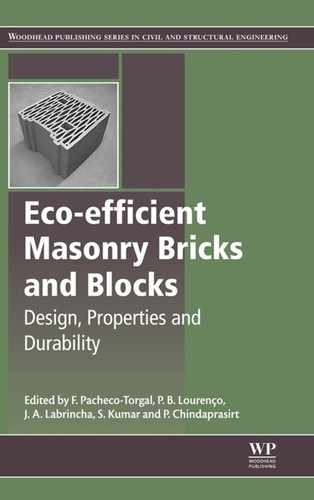Abhat A. Low temperature latent heat thermal energy storage: heat storage materials. Solar Energy. 1983;30:313–332.
Alawadhi E. Phase change with free convection in a circular enclosure: numerical simulations. Computers and Fluids. 2004;33:1335–1348.
Alawadhi E. Thermal analysis of a building brick containing phase change material. Energy Buildings. 2008;40:351–357.
Alawadhi E. Finite elements simulations using ANSYS. Taylor and Frances; 2010.
Alawadhi E. Using phase change materials in window shutter to reduce the solar heat gain. Energy and Building. 2012;47:421–429.
Alawadhi E, Alqallaf H. Thermal analysis of a building's roof with cone frustum holes containing PCM. Energy Conversion and Management. 2011;52:2958–2964.
Arkar C, Medved S. Free cooling of a building using PCM heat storage integrated into the ventilation system. Solar Energy. 2007;81:1078–1087.
Barkmann H.G, Wessling F.C. Use of building structure components for thermal storage. In: Processing of the workshop on solar energy storage subsystems for heating and cooling of building. Virginia, USA: Charlottesville; 1975.
Cabeza L, Castellon C, Nogues M, Medrano M, Leppers R, Zubillaga O. Use of microencapsulated PCM in concrete walls for energy savings. Energy Buildings. 2007;39:113–119.
Cabeza L.F, Castell A, Barreneche C, De Gracia A, Fernández A.I. Materials used as PCM in thermal energy storage in buildings: A review. Renewable and Sustainable Energy Reviews. 2011;15(3):1675–1695.
Castell A, Martorell I, Medrano M, Perez G, Cabrza L. Experimental study of using PCM in brick constructive solution for passive cooling. Energy Buildings. 2010;42:534–540.
Castell A, Menoufi K, de Gracia A, Rincon L, Boer D, Cabeza L.F. Life cycle assessment of alveolar brick construction system incorporating phase change materials (PCMs). Applied Energy. 2013;101:600–608.
Cengel Y. Heat Transfer, “a practical approach,”. New York: Mc-Graw Hill Book; 1998.
Cheng R, Pomianowski M, Wang X, Heiselberg P, Zhang Y. A new method to determine thermophysical properties of PCM-concrete brick. Applied Energy. 2013;112:988–998.
Chwieduk D. Dynamics of external wall structures with a PCM (phase change materials) in high latitude countries. Energy. 2013;59:301–313.
Goia F, Perino M, Hasse M. A numerical model to evaluate the thermal behavior of PCM glazing system configurations. Energy Buildings. 2012;54:141–153.
Hale D, Hoover M, O’Neill M. Phase change materials handbook. USA: Space Sciences Laboratory, George Marshall Space Flight Center; 1971.
Hichem N, Noureddine S, Nadia S, Djamila D. Experimental and numerical study of a usual brick filled with PCM to improve the thermal inertia of buildings. Energy Procedia. 2013;36:766–775.
Ismail K, Salinas C, Henriquez J. Comparison between PCM filled glass windows and absorbing gas filled windows. Energy Buildings. 2008;40:710–719.
Izquierdo-Barrientos M, Belmonte J, Rodríguez-Sánchez D, Molina A, Almendros-Ibáñez J. A numerical study of external building walls containing phase change materials (PCM). Applied Thermal Engineering. 2012;47:73–85.
Kenisarin M, Mahkamov K. Solar energy storage using phase change materials. Renewable and Sustainable Energy Reviews. 2007;11:1913–1965.
Koschenz M, Lehmann B. Development of a thermally activated ceiling panel with PCM for application in lightweight and retrofitted building. Energy Buildings. 2004;36:567–578.
Lai C, Chiang C. How phase change materials affect thermal performance: hollow bricks. Building Research and Information. 2006;34:118–130.
Mandelbrot B. The fractal geometry of nature. New York: Freeman; 1983.
Mehling H, Cabeza L.F. Heat and cold storage with PCM. Springer. 1997.
Mehling H, Cabeza L.F. Phase change materials and their basic properties. In: Paksoy H.O, ed. Thermal energy storage for sustainable energy consumption: Fundamentals, case studies and design. Kluwer Academic Publishers Group; 2007:257–278.
Morikama Y, Suzuki H, Okagawa F, Kanki K. A development of building element using PCM. In: Proceedings of the international symposium on thermal application of solar energy. 1985 (Kanagawa, Japan).
Osterman E, Tyagi V.V, Butala V, Rahim N.A, Stritih U. Review of PCM based cooling technologies for buildings. Energy and Buildings. 2012;49:37–49.
Pasupathy R, Velraj. Effect of double layer phase change material in building roof for year round thermal management. Energy Buildings. 2008;40:193–203.
Pomianowski M, Heiselberg P, Zhang Y. Review of thermal energy storage technologies based on PCM application in buildings. Energy and Buildings. 2013;67:56–69.
Principi P, Fioretti R. Thermal analysis of the application of PCM and low emissivity coating in hollow bricks. Energy and Buildings. 2012;51:131–142.
Ravikumar M, Sirinivasan P.S.S. Year round performance of PCM filled RCC roof for thermal management. European Journal Scientific Research. 2011;3:424–433.
Silva T, Vicente R, Soares N, Ferreira V. Experimental testing and numerical modelling of masonry wall solution with PCM incorporation: a passive construction solution. Energy Buildings. 2012;49:235–245.
Soares N, Costa J.J, Gaspar A.R, Santos P. Review of passive PCM latent heat thermal energy storage systems towards buildings’ energy efficiency. Energy and Buildings. 2013;59:82–103.
Torgal P.F, Mistretta M, Kaklauskas A, Granqvist C, Cabeza L.F. Nearly zero energy building refurbishment. Springer; 2013.
Turner, W. C., & Malley, J. F. Handbook of Thermal Insulation Design Economics for Pipes and Equipment. New York: McGraw-Hill. pp. 15–30.
Waqas A, Din Z. Phase change material (PCM) storage for free cooling of buildings—a review. Renewable and Sustainable Energy Reviews. 2013;18:607–625.
Yang L, Zhang X, Xu G. Thermal performance of a solar storage packed bed using spherical capsules filled with PCM having different melting points. Energy Buildings. 2014;68:639–646.
Zhang C, Chen Y, Wu L, Shi M. Thermal response of brick wall filled with phase change materials (PCM) under fluctuating outdoor temperatures. Energy and Buildings. 2011;43:3514–3520.

![]()





![]()
![]()



![]()












